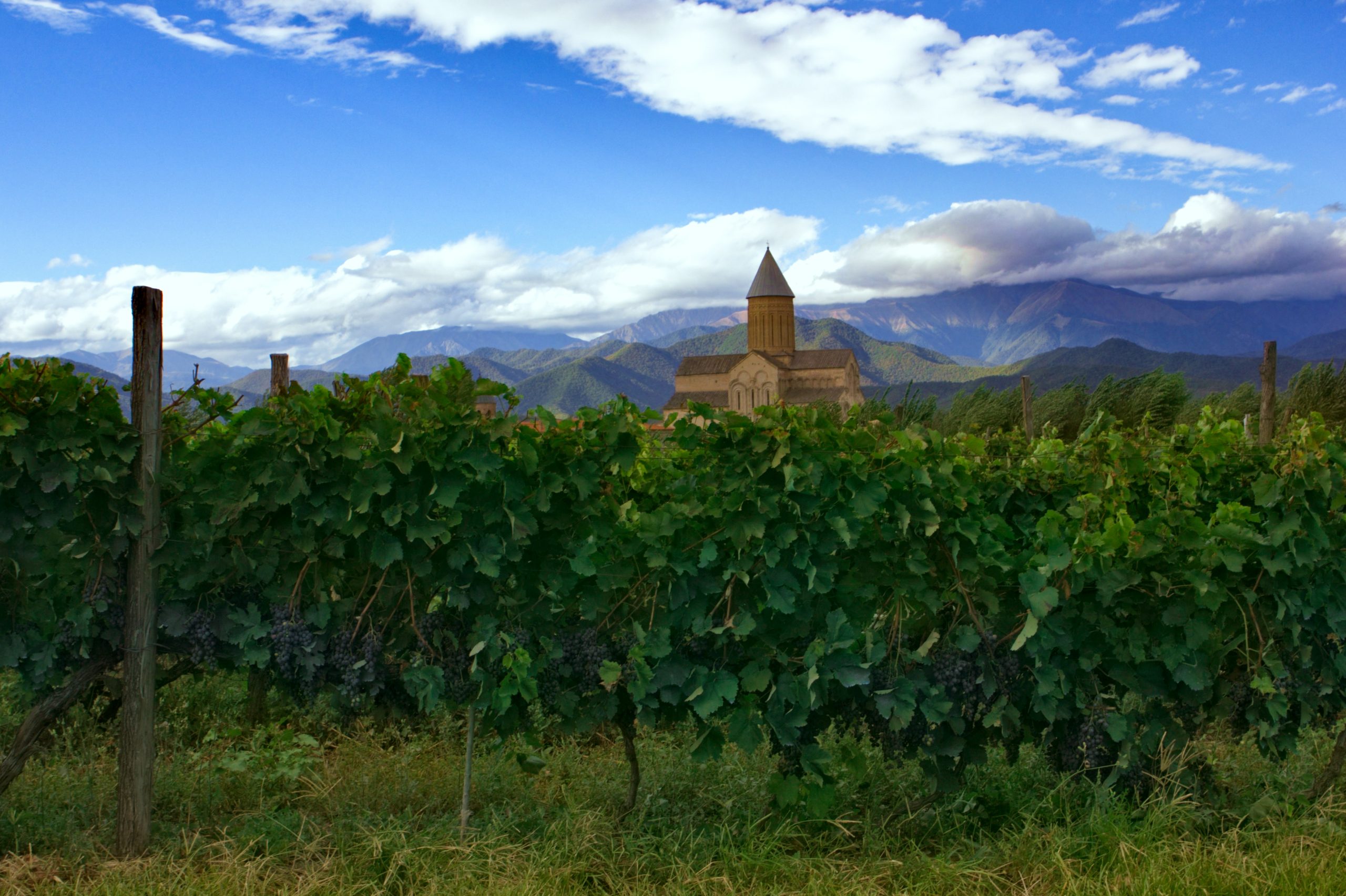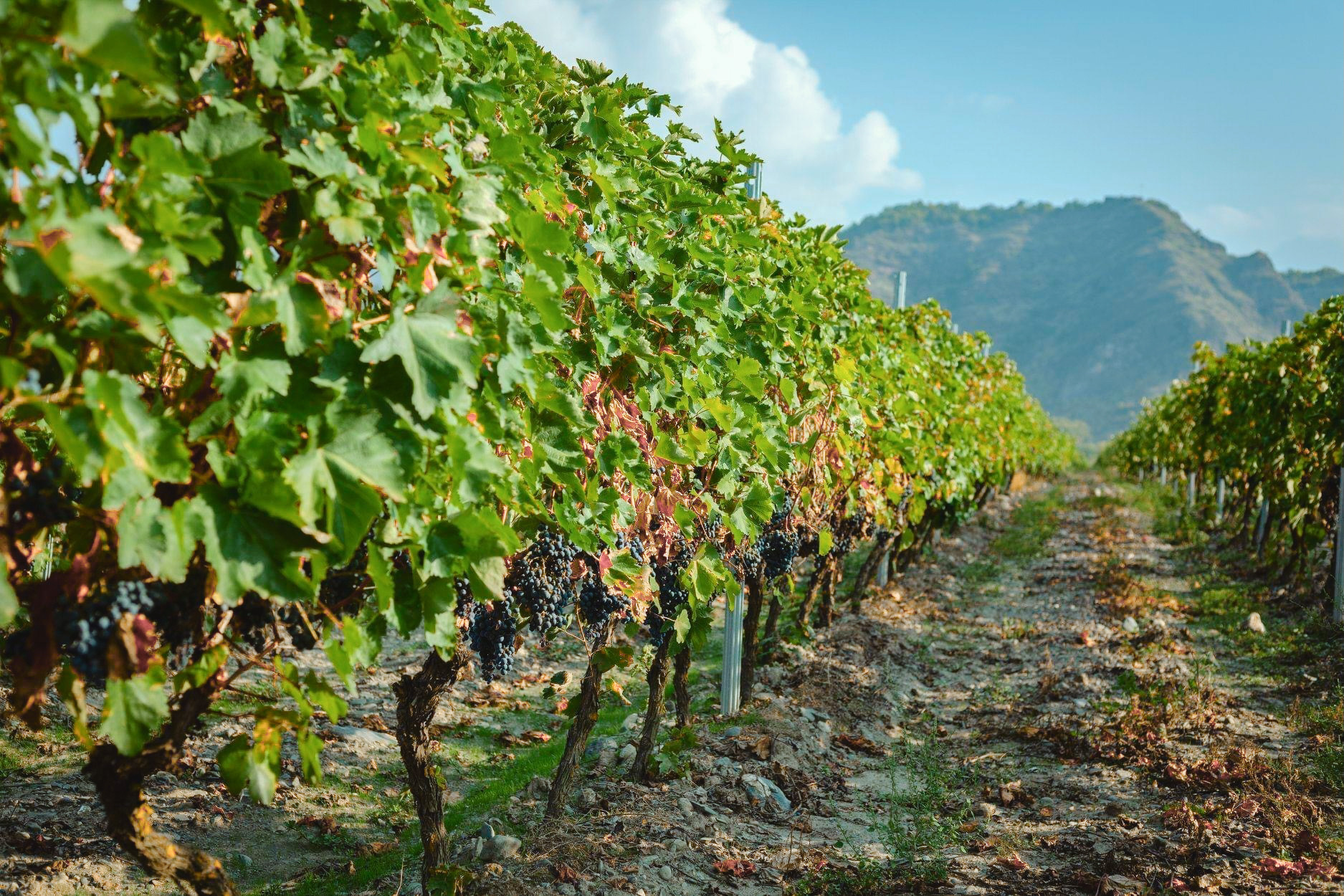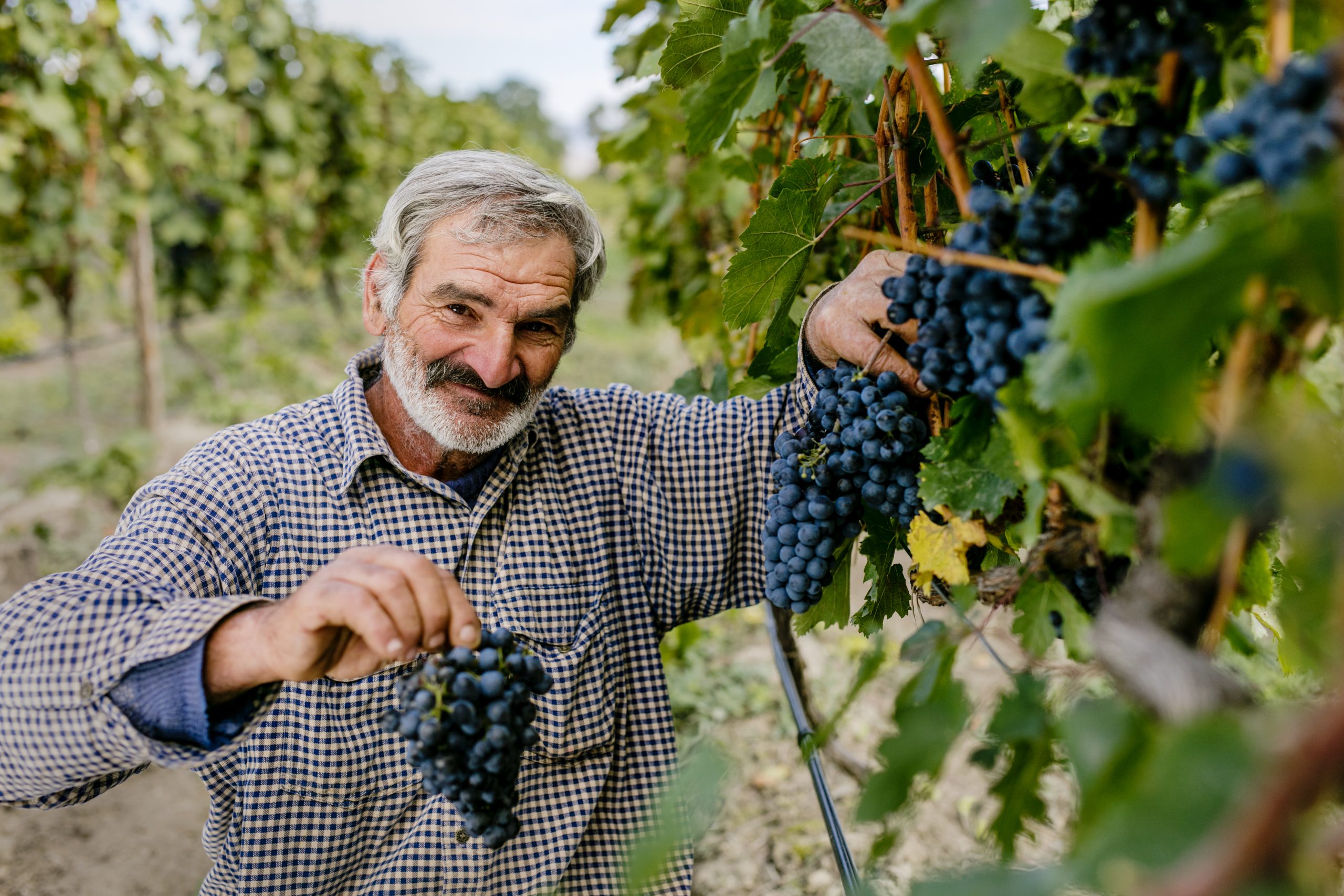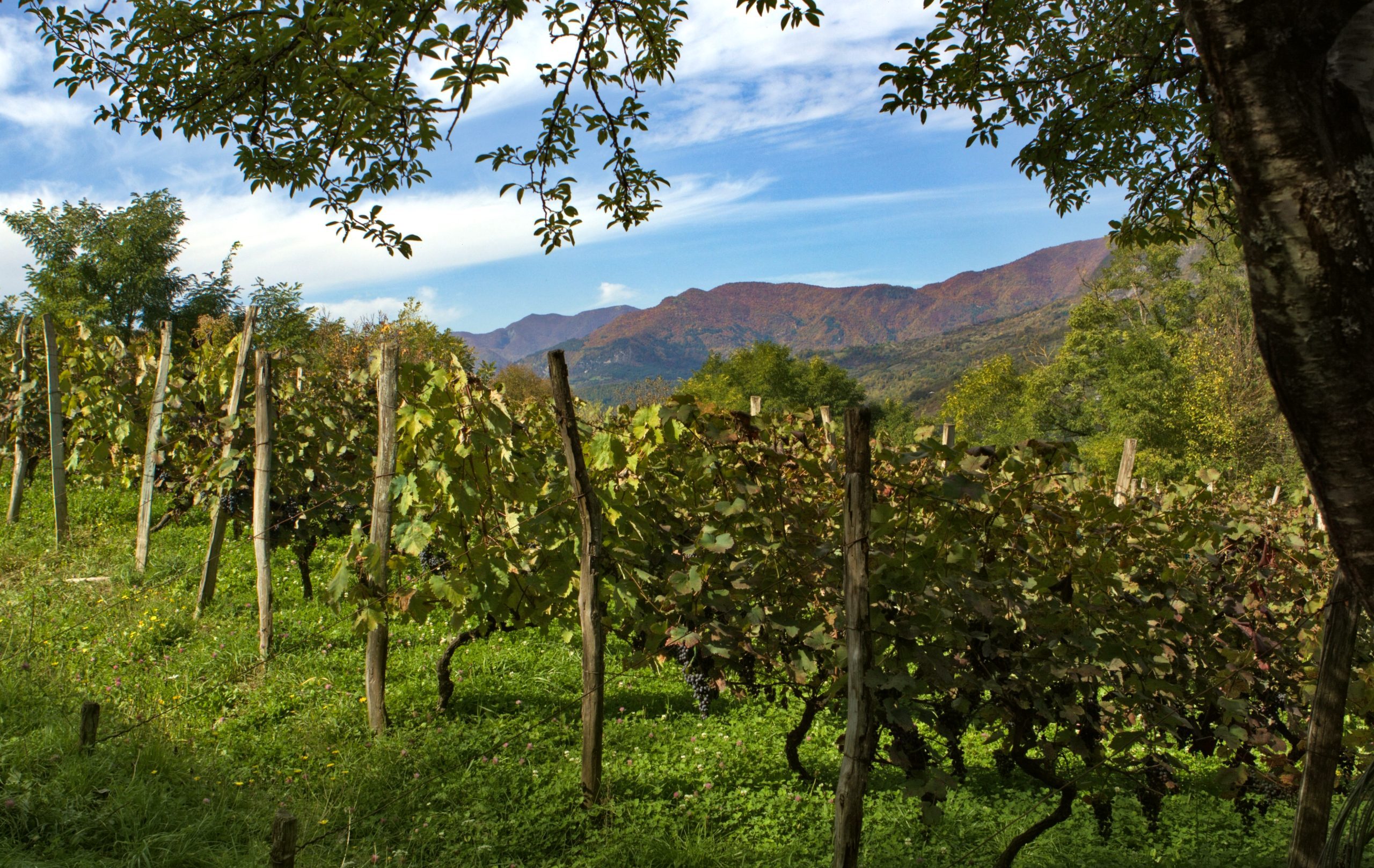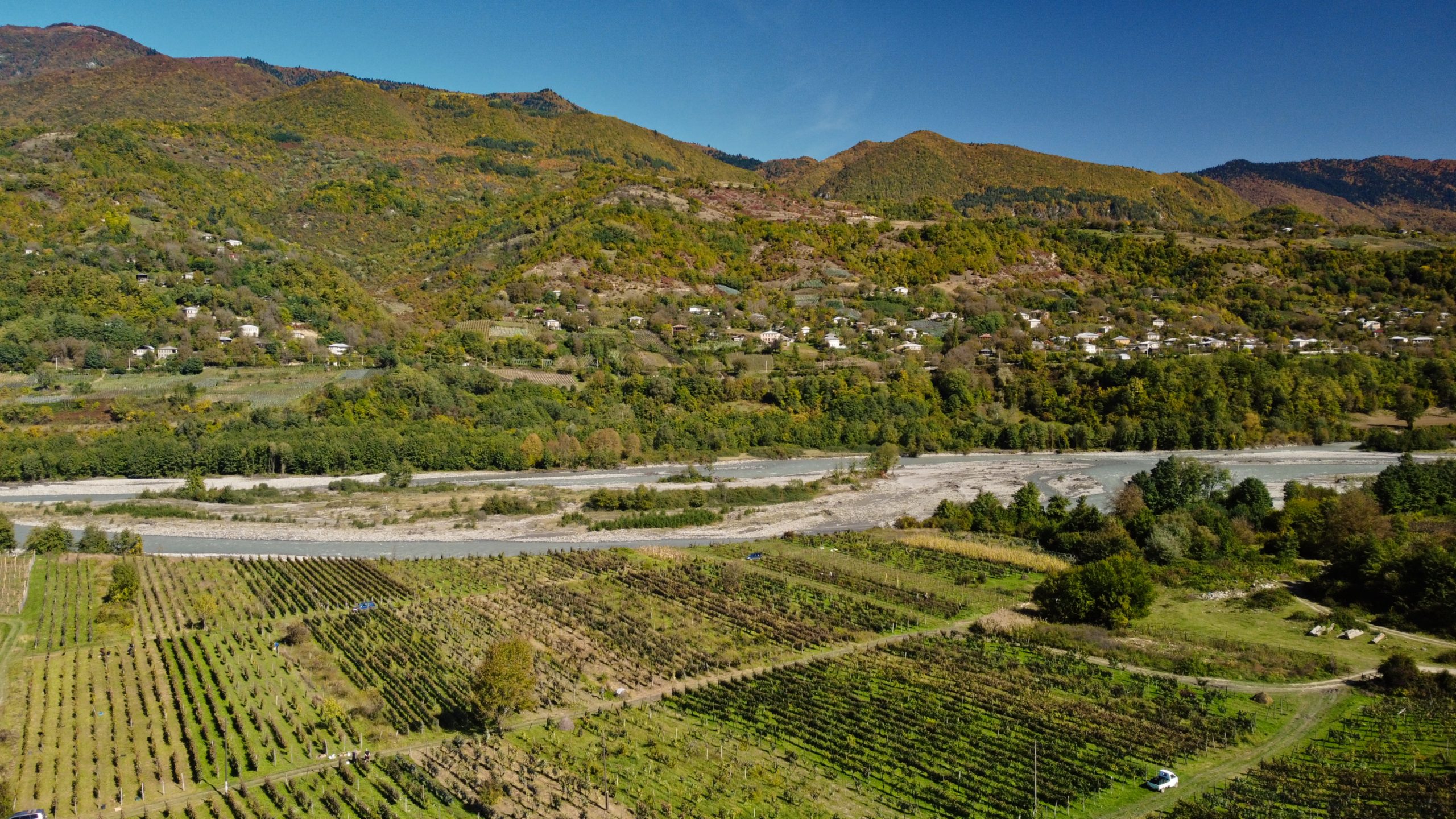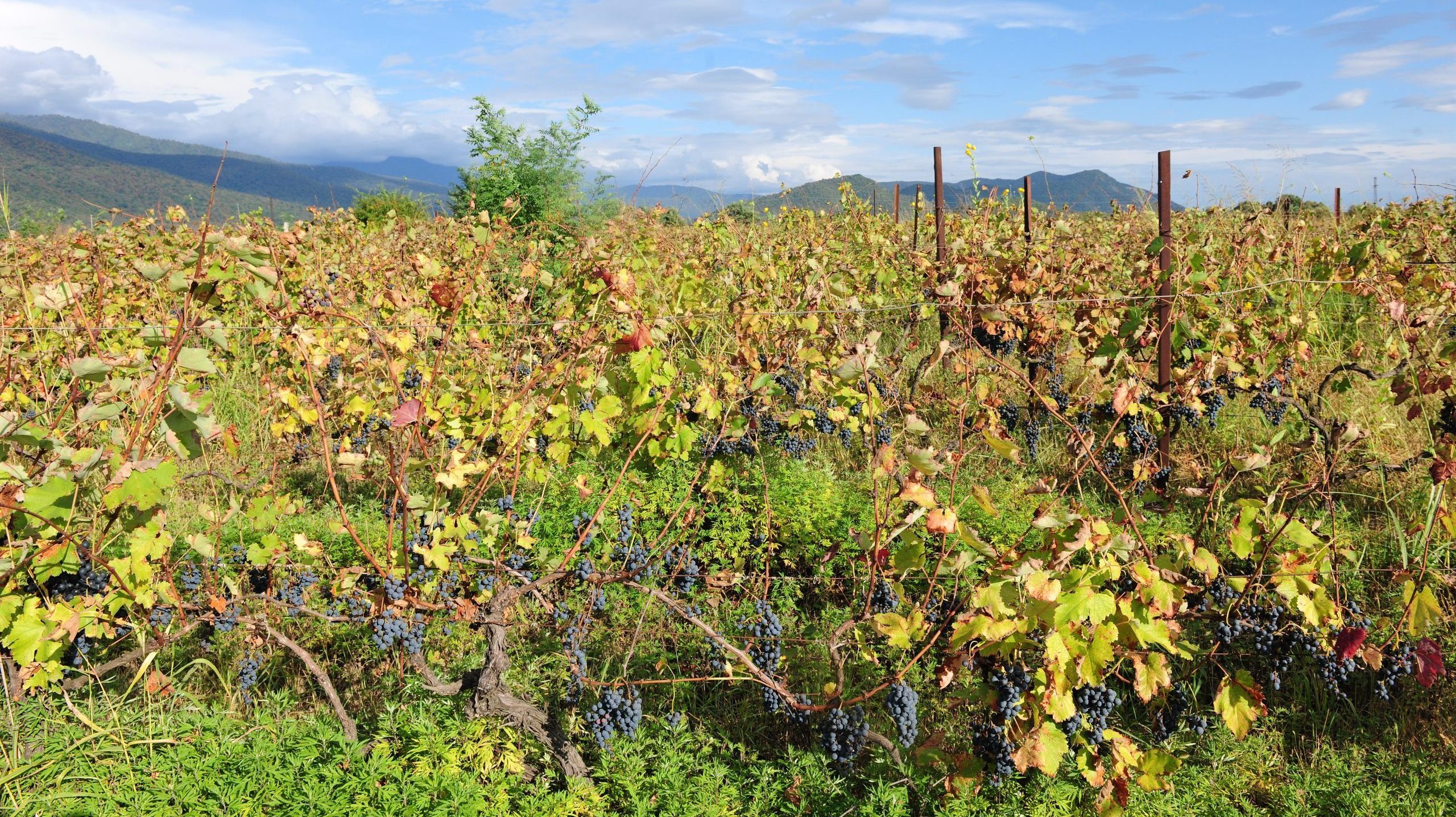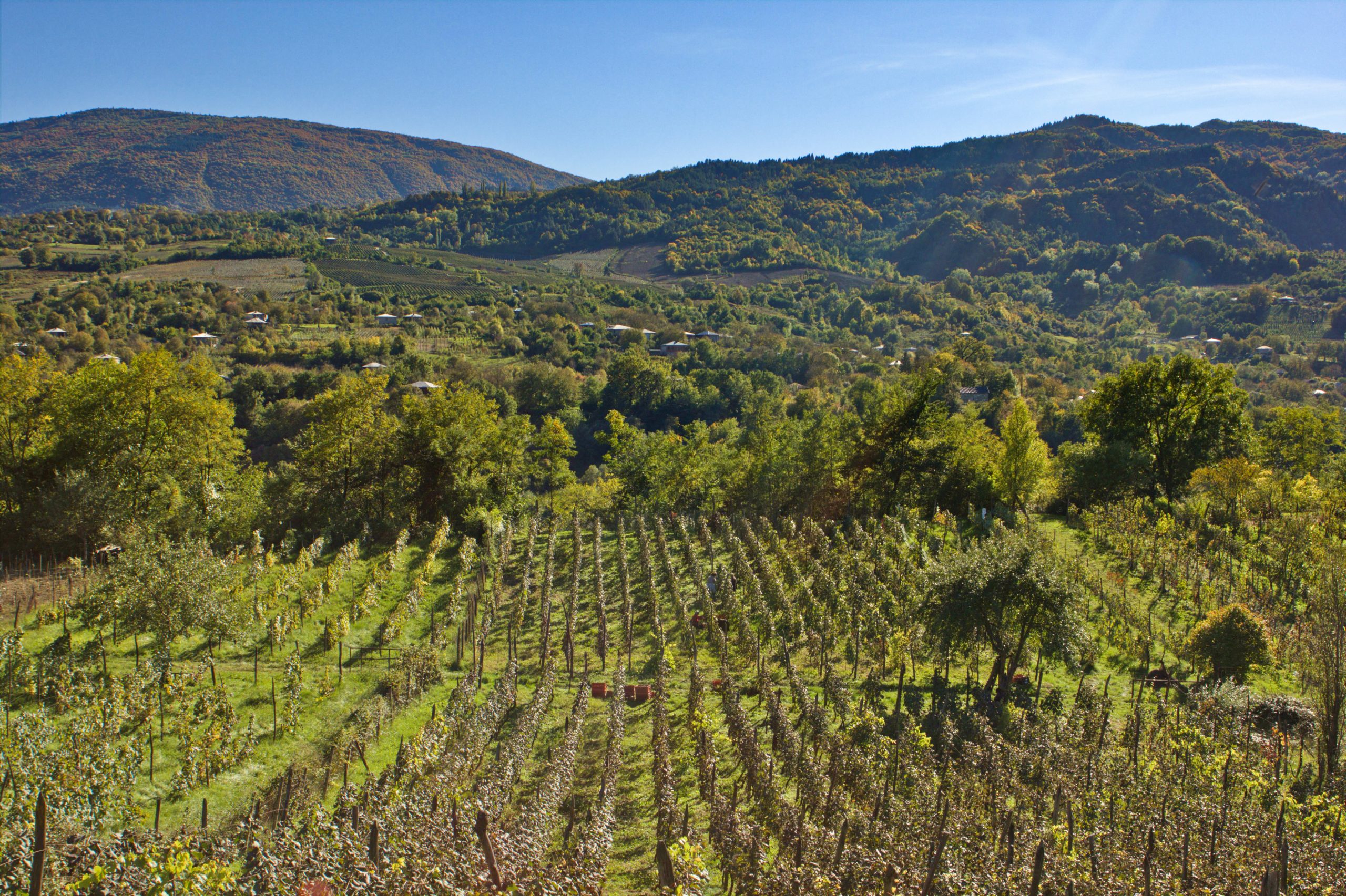“Georgia is the only country in the world where winemaking methods developed up to 8000 years ago have not only never been abandoned, but in many ways still represent best practice.” Andrew Jefford (English wine journalist)
Ten wine regions stretch across the country
KAKHETI
Kakheti in the far east of the country is the largest and best-known growing region, accounting for about 70 percent of Georgia’s vineyards. Under the protection of the Caucasus, around 80 percent of Georgia’s wine production is produced here. The various sub-regions are almost all grouped around the Alazani River, which makes its way from the mountains to the interior. The climate is changeable continental, with sometimes mild to subtropical temperatures, it rains mainly in winter, summers are dry. The nutrient-poor soils provide ideal conditions for viticulture. The so-called “cinnamon” soils consist of sandy, calcareous loam with a high iron content, which gives them their characteristic (cinnamon) color. Due to the dry climate, any organic material on the topsoil decomposes very quickly. As a result, the vines have to penetrate deep into the soil and can thus develop particularly complex root systems, which is reflected in the quality of the grapes.
CARTONS
The Kartli region around the capital Tbilisi is characterized by rather flat plains. Here, the vines stand in river basins, and the Kura stream runs through the middle of the region. Here, probably also due to the proximity to the pulsating metropolis of Tbilisi, modern winemaking has found its way in, but of course wines are also produced here according to traditional style. Kartli is known for its sparkling wine, the Atenuri.
IMERETI
Imereti is located in west-central Georgia, following the southwestern course of the Rioni River. Overall, one can speak of a rather humid climate. However, microclimates and soil types vary greatly here, resulting in a variety of different wines. The Qvevri is known here as Churi, the skin contact is usually less intense than in Kakheti, for example, and the wines are therefore a little more playful.
RACHA AND LETCHCHUMI
In the northwest of Georgia are the two regions of Racha and Letchkhumi. Although there is not much wine produced here, there are some very rare native varieties that grow mainly on the banks of the Rioni River. The ripening period here is long, the harvest often takes place late, so the region is known for its sweet wines.
GURIEN AND SAMEGRELO
Guria and Samegrelo are located on the southwestern and western edges of Georgia, between the mountains of the Lesser Caucasus and the Black Sea coast to the west. The climate is humid and subtropical with mild winters and hot summers. The region has an old winemaking tradition, in which vines were often grown on trees. The harvest begins late in November and sometimes lasts until January.
MESKHETI
The Meskheti region is located in the south of Georgia on the border with Turkey. The vineyards of the region are traditionally located in the river valleys of the river Mtkvari and its tributaries, as well as on slopes and terraces. Meskheti is characterized by a continental climate, little rainfall and cold winters, as well as long, hot summers. However, the climate around Akhaltsikhe, located in the middle of the Meskheti region, differs from those of the neighboring regions: with very little rainfall and an average annual temperature of 8-9 degrees Celsius, this is the driest wine-growing region in Georgia. The vineyards must therefore be well watered. In winter, the vines were traditionally buried and the terracing provides additional protection from frost.
AJARA
Located in southwestern Georgia on the Black Sea, Ajara is one of the country’s tourist highlights. The humid climate near the coast is characterized by numerous hours of sunshine in spring and summer, as well as a lot of precipitation, especially in September and October. Most of the terrain consists of hills and mountains and almost 60% is covered with forest. Ajara also has a long tradition of viticulture. Today, many vineyards in the region are newly planted or restored, and old grape varieties are also increasingly used.
APKHAZETI
Apkhazeti covers an area of about 8,660 square meters in western Georgia, on the northern shore of the Black Sea. The topography is diverse, as the region ranges from the plains on the Black Sea to the high peaks in the north. The region is extremely mountainous and populated, especially on the coast, the climate is mild. Until the 20th century, viticulture was widespread here, until powdery mildew and grey mould decimated the vineyard area.
*There are 24 Protected Designations of Origin (PDO) in Georgia, 18 of them in Kakheti, 2 in Kartli, 2 in Racha and Lechkhumi, and one each in Imereti and Samegrelo.
More about wines from Georgia: https://weine-aus-georgien.de/
Editor’s Pick:
Do you already know the oldest port wine-growing region in Europe? Discover the beauty of the Douro Valley.
